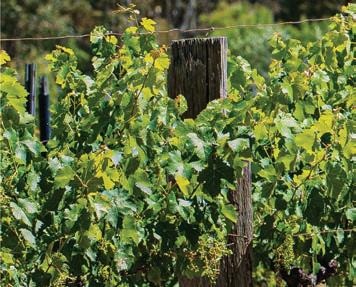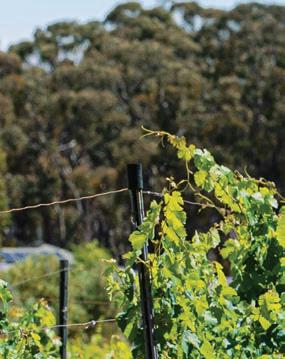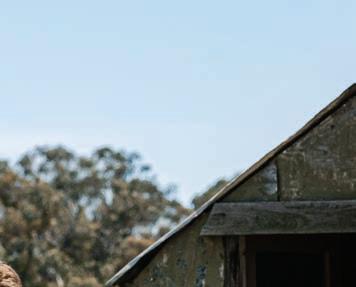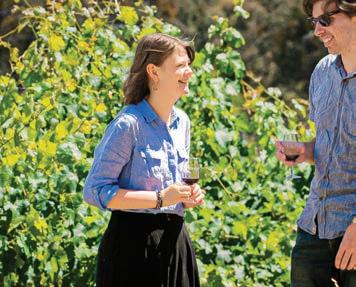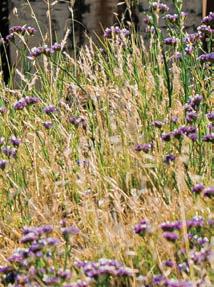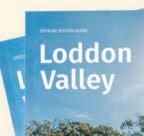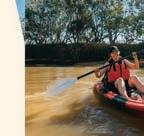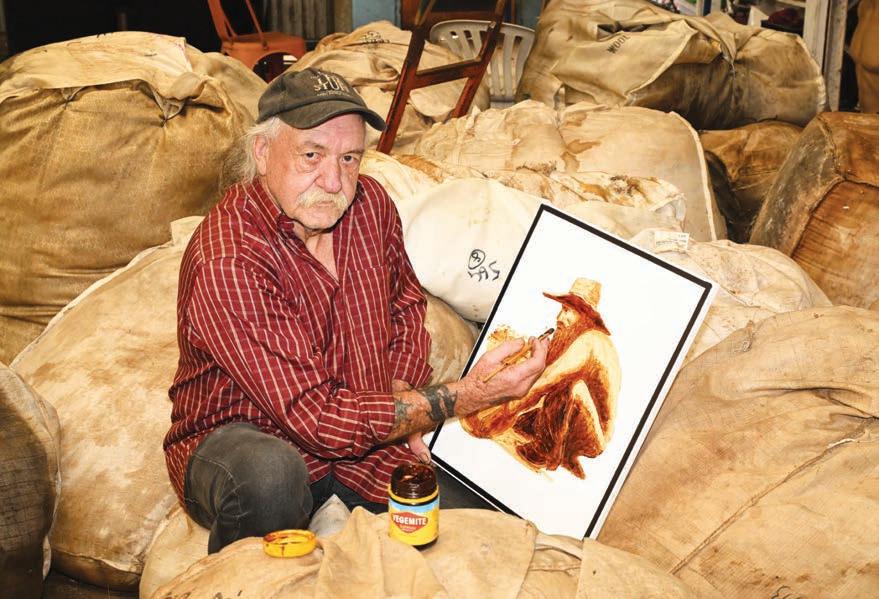


YOUR OFFICIAL INVITATION TO EXPLORE EXCITEMENT IN THE LODDON


Natural beauty, golden history and amazing people
PAGE 6
Discover one of Victoria’s finest private collections of Indigenous artefacts at Yung Balug Keeping Place Museum
PAGE 16
Explore the spectacular overhangs and hidden caves of Kooyoora State Park
Spring is the season of rebirth and abundance, and the beautiful Loddon region is the perfect destination to explore everything that this time of year offers.
Our special part of Victoria offers rare natural beauty, a rich First Nations history, the thrill of the gold era, fascinating native wildlife, wineries, great food, festivals and events.





Immerse yourself in an environment filled with birdsong, the alluring scent of eucalypt forests, wide open agricultural plains and mountains that seem created by a giant’s hands.
A river runs through it. The mighty Loddon weaves a path between stands of red gum and black box forest and eases its way through the heart of some of the region’s finest towns.
At Bridgewater-on-Loddon the river is wide and stately, attracting water-skiers and offering an array of other aquatic pursuits.
At Newbridge, the focus is on fishing from its banks or from tinnies.
Gold is at the heart of the region’s historic appeal. Thousands of optimistic miners made their way from all over the world to the prolific goldfields of the Loddon area.
Most failed to make their fortunes, but they and others who chased this new wealth as shopkeepers, farmers, mining suppliers, doctors, hoteliers, blacksmiths and more all contributed to the built environment we see today.

Our town’s streets and highways are lined with solid 19th-century bank buildings, town halls, museums, libraries and theatres. Away from the main roads you can discover quaint miners’ cottages and more substantial farmhouses that belonged to the big landowners of the time.
Welcome to the Loddon Way, enjoy your visit and come back soon.





Inglewood's Mal Gilmour and dozens of local creatives will fill studios, halls and pop-up spaces with their works for the second annual Loddon Arts Trail between October 4 and 6.
Loddon Valley is a haven for increasing numbers of creative people, who work away at everything from big metal sculptures to tiny intricate embroideries, from realistic depictions of country life to bold conceptual fantasmagoria, riots of colour and shapes.
Across the Arts Trail weekend, from Friday afternoon through to Sunday early evening, you’ll be welcomed into galleries, neighbourhood houses, studios, cafes, a winery, and a very special historic house.
Mal, a self-taught landscape artist, has exhibited widely throughout Australia over the last 55+ years, including 38 solo exhibitions and alongside his contemporaries, including luminaries such as Fred Williams, Pro Hart, Brett Whitely, Sidney Nolan, Arthur Boyd and many more. His Loddon Arts Trail exhibition, which coincides with his annual exhibition, has taken the last 12 months to complete, including studio and out in the bush work. It will hang in his gallery alongside an array of work from past years, also works from his art class students, who have been included for this exhibition.

A few years ago, the quiet little hamlet of Tarnagulla was named one of Australia’s 50 hidden gems. A gem it is, but gold was the precious commodity that brought wealth and fame to Tarnagulla, even luring Dame Nellie Melba and the scandalous Lola Montez to perform at the Victoria Theatre.
Tarnagulla’s is one of the bestpreserved gold rush streetscapes in Australia – imposing edifices such as the former Colonial Bank, with its intact gold smelter chimney, sit beside quaint miner’s cottages, their verandas jostling for position over the wide footpaths, and gnarled gum trees line the roadway.
There are quirky places such as the two-storey former undertaker’s premises, adjacent to the eclectic vintage store Octopus & Queen – look for the window on the second floor which led to a chute on which bodies
were slid from a horse-drawn hearse down into the cold storage room.
It’s hard to believe, but the goldfields here were so rich that by 1865
Tarnagulla was home to about 5000 miners and camp followers – about 1000 of whom were Chinese – and had nine general stores, four pubs, four blacksmiths, three surgeons, two pharmacies and two bootmakers.
For all its charm and history, Tarnagulla is rarely thronged with visitors, except in early spring when the annual Tarnagulla Strictly Vintage Fair brings
hundreds into town for a day of fun and frivolity.
Set for September 8 this year, the fair sees the street lined with vintage cars and caravans, dozens of stallholders selling antiques and collectables, men primping their beards for the facial hair competition, women donning their fanciest aprons for the pinny contest, and even an appearance by Queen Victoria at high tea in the theatre named in her honour.
Whenever you visit, take a stroll down Commercial Road and enjoy its enduring beauty. Explore the back streets and their 19th-century churches, the most
striking of which is the skeletal shell of the Wesleyan Methodist Church, inescapably reminiscent of the convict church at Port Arthur.
Don’t miss the recreation reserve: although no organised sport is played there now, the grand two-storey wooden pavilion is the oldest of its kind in the state. And follow well-marked walking trails through the box and iron gum forests that surround Tarnagulla, keeping an eye out for old shafts among the heaped mounds of mining tailings.
Imagine yourself walking these paths 150 years ago, amid the noise and chaos of the gold rush. Towns like Tarnagulla have a way of making history make sense.

An epiphany experienced on the jungle battlefields of Vietnam has led to one of Victoria’s finest private collections of Indigenous artefacts, on display just outside Boort.
Paul Haw was a conscript in the Australian Army artillery, and newly arrived in Vietnam, when a mine exploded near him. The blast killed two soldiers and left Haw with shrapnel in both legs, both arms and a lung, as well as a broken wrist.
Months later he was back in action in the Battle of Coral-Balmoral, in which his unit killed a large number of North Vietnamese soldiers. Haw and his mates had to bury about 50 enemy combatants. “ Every one of them had a picture of mum or dad with them,” Haw recalls.
“These were human.
From that day forward I valued everybody as equal.”
Haw served with a handful of Aboriginal soldiers in Vietnam, and his respect for them and his belief in equality helped inspire the Yung Balug Aboriginal Artefacts Museum.
He gathered some historic objects that had been stored on the family farm near Boort, was gifted some others, and over 50 years developed a huge collection that documents Indigenous life in the district.
Here you can view the only full displayed collection of John Hunter Kerr’s fascinating photographs of Aboriginal life around Boort, taken in the 1850s shortly after first contact with Europeans.

You can see a boomerang and a shield made and used by renowned artist William Barak, who lived from 1824 to 1903, a Wurundjeri leader known as the “last chief of the Yarra Yarra tribe”. The boomerang alone, Haw says, is worth perhaps $250,000.
There are exquisite rush “dilly bags” used by women for carrying objects, fish traps, stone implements, a boomerang painted by Albert Namatjira, carved emu eggs and more. Haw estimates that 80 per cent of the collection dates from 20 to 30 years before white contact.
So expansive is the collection, which is overflowing its current premises, Haw is constructing another building to allow the treasures to grow further and to better display the artefacts.
But there is much more to Boort’s wealth of Indigenous history. Haw takes visitors to see ‘scarred’ trees on the banks of Lake Boort, of which there are estimated to be more than 500.
These are stately grey and black box trees with their bark partly stripped away by stone tools to make practical objects such as canoes, shields and carriers for food, water and babies.
There is evidence too of more recent activity. During the Depression, people sought to kill possums, rabbits and foxes that sheltered in hollow trees to sell their skins – scar trees made perfect habitats.
Hunters would cut a hole with a steel axe to capture the animals, providing a modern twist to an ancient tale.


Victoria, and Melbourne in particular, is renowned for its street art. It might seem like a big city thing, but in Wedderburn, the Loddon Valley’s administrative centre, there’s a trail of colourful murals that provide a delightful natural twist to the tale.
On public buildings along the main street – a pub, a supermarket, a newsagency and even an historic church – you’ll see a range of murals highlighting the beautiful birds of the region.


The designs feature kookaburras, wedge-tailed eagles, mistletoe birds, lorikeets, delicate little wrens and honeyeaters.
And just off the highway, uniquely painted on the sides of a public convenience, you will see a golden whistler, a superb fairy wren and a scarlet robin, along with a diamond firetail adorning a small wall.
The most striking images, certainly for the magnificence of their canvas, are the artworks on the façade of the Uniting Church, which dates to the 1860s, built as the Methodist Church when the gold rush was in full swing.
In spring, the walls tell a story playing out all in real time throughout the Loddon region, where the seasonal change has brought an abundance of new life.
Wedderburn is internationally known for the variety of its birdlife. Here, four distinct bio-regions meet and intersect, encouraging the presence of 180 different species, 20 of which are listed as endangered.
Three well-known street artists collaborated on the murals in 2021 –Andrew Bourke, Jimmy Dvate and Bryan Itch.
The town is typical of those which grew exponentially during the gold era. This was a rich mining area, and nuggets are still to be found to this day.
The ‘Hand of Faith’ nugget was discovered outside Wedderburn in 1980 by a couple using a metal detector. It weighed almost 28 kilograms and was sold intact to the Golden Nugget Casino in Las Vegas. Its estimated worth is $3.5 million.
Few lumps of gold have a history as dramatic as the ‘Pride of Australia’ nugget discovered in Wedderburrn in 1981, weighing a hefty eight kilograms. It was bought by the State Bank of Victoria and donated to the Melbourne Museum.
Ten years later it was stolen in a smash and grab raid and never seen again. It is presumed that the nugget – worth about $250,000 at the time – was melted down and disposed of.
Wedderburn – and the Loddon area generally – is also famous for its eucalyptus distilleries. At Hard Hill Tourist Reserve on the edge of the township there is a functioning eucy oil stew pot, which is fired up by local volunteers.
At Inglewood, just down the highway, you can visit the Eucalyptus Distillery Museum, open from Thursday to Sunday each week. Just the thing for clearing your lungs.

dating from classic vintage to the modern-day line up regimentally along Brooke Street.
A woodchop competition attracts some of Victoria’s best axmen and women, and dozens of stalls and displays fill the streets. Add great food, children’s activities, a busking competition and a chance to explore Brooke Street’s historic appeal, and it’s a date to savour.
Inglewood is famous for its vintage and collectables shops, and these treasure houses will be open on the day. Fossick about, and you’re sure to find something unique and memorable.


It’s rare to see the Calder Highway – one of Victoria’s busiest commercial and tourism routes – closed to traffic so the locals can make merry along the main street.
But that’s Inglewood in November, when the Inglewood Alive Festival comes to town.
This year’s event is on November 3, the Sunday before the Melbourne Cup, and while the citizens and visitors may not be dressed in the splendid finery seen at Flemington’s famous Spring Carnival, the town itself will be looking its very best. Inglewood’s Brooke Street –otherwise known as the Calder Highway - is a classic gold era streetscape of wooden verandas and solid public buildings, many of which have been turned to new uses. The festival brings together a wide range of activities and displays – a highlight is the show-and-shine display of cars and motorbikes organised by the Inglewood Cars and Bikes Club, which sees vehicles
The scent of eucalyptus hangs over the town – this part of Victoria is Australia’s great centre for eucalyptus oil production – and the charming Eucalyptus Distillery Museum brings this historic process back to life.
Colloquially known as the ‘Eucy Museum’, this is a much-loved local landmark. There is a comprehensive collection of memorabilia and a fully operating model distillery. Next door is the heritage-listed Old Jones Distillery, open to the public from Thursday to Saturday.
Just beyond Inglewood, in a fold of hills near Kooyoora State Park, you will find the tiny settlements of Kingower and Rheola. The latter boasted 130 stores during the gold rush and is a classic example of a mining-era village lost in time.

















